Did you bring home a beautiful Poinsettia for the holidays? The colorful houseplant has been a Christmas classic since the 19th century. It blooms in winter, making it the perfect centerpiece to brighten your home during the dark and dreary days around the solstice.
While most people ditch their Poinsettias after the holidays, you can (and should) treat yours like any other houseplant and grow it year-round. Here’s what you need to know about caring for Poinsettias in winter, what to do after the holidays, and how to make them rebloom!
Disclosure: If you shop from my article or make a purchase through one of my links, I may receive commissions on some of the products I recommend.
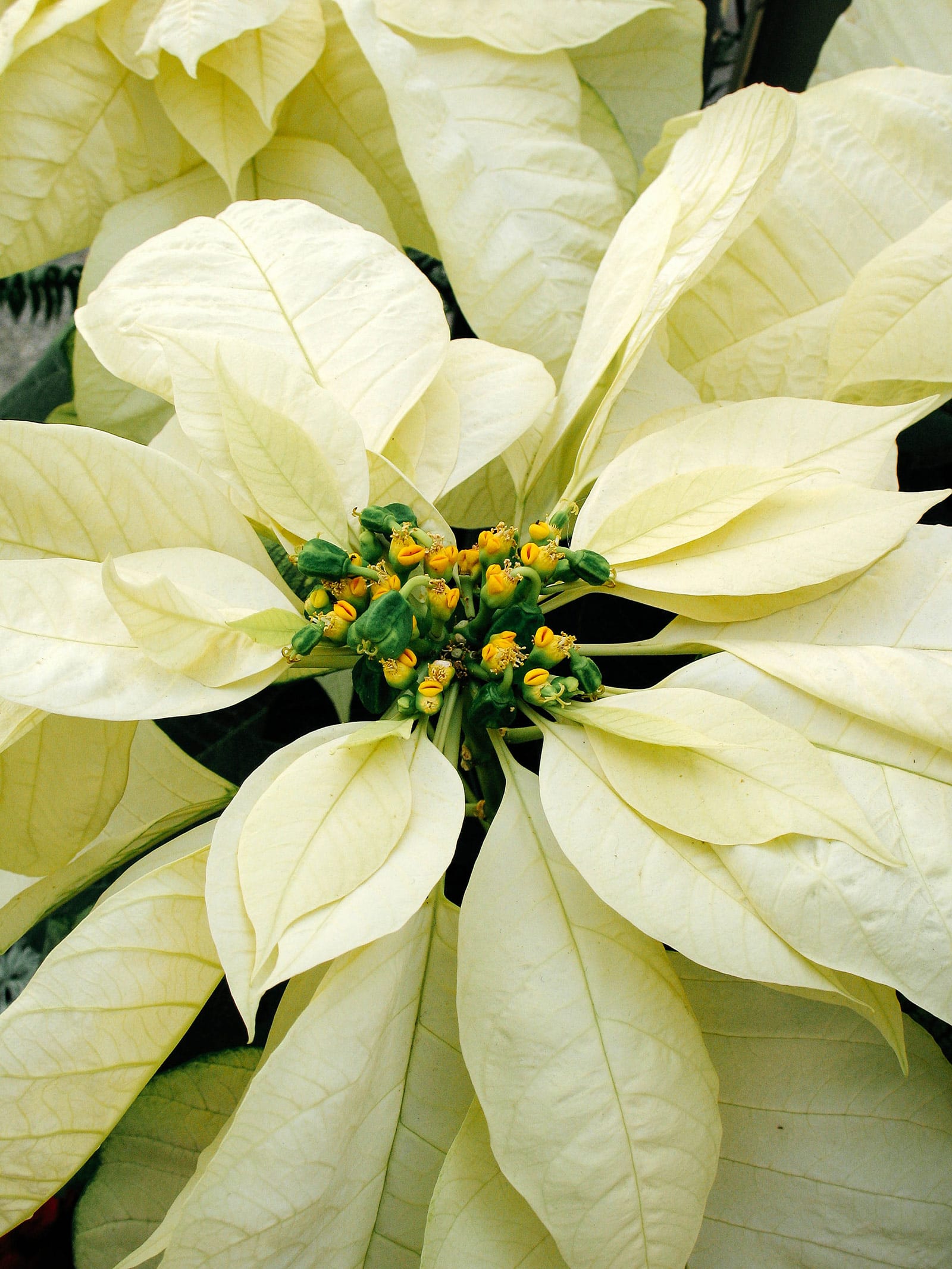
It starts with a healthy plant
If you’ve brought home a Poinsettia before, you’ll know that it isn’t the easiest plant to keep alive long-term (which is why some people opt for other types of holiday houseplants). Poinsettias often arrive at your home already stressed from shipping (or from being manhandled at the store), exposed to cold and either underwatered or overwatered.
This means that in many cases, you’re not exactly off to a good start. The species is also prone to leaf drop. To improve the chances of your Poinsettia thriving during (and after) the holidays, look for these telltale signs of a healthy plant:
- Lush, erect foliage
- No leaf drop or browning/yellowing leaves
- Soil is neither dry nor waterlogged
- Flowers are still closed
- Not placed close to the doors in the shop (they don’t like the cold and draft)
- Planter has drainage holes
Be sure not to expose your plant to extreme cold on your way home, and don’t leave it in the garage overnight.
Quick tip
A Poinsettia’s bracts are often confused for its flowers, but the real flowers are actually tiny and unassuming. You’ll find them in the center of the colored leaves.
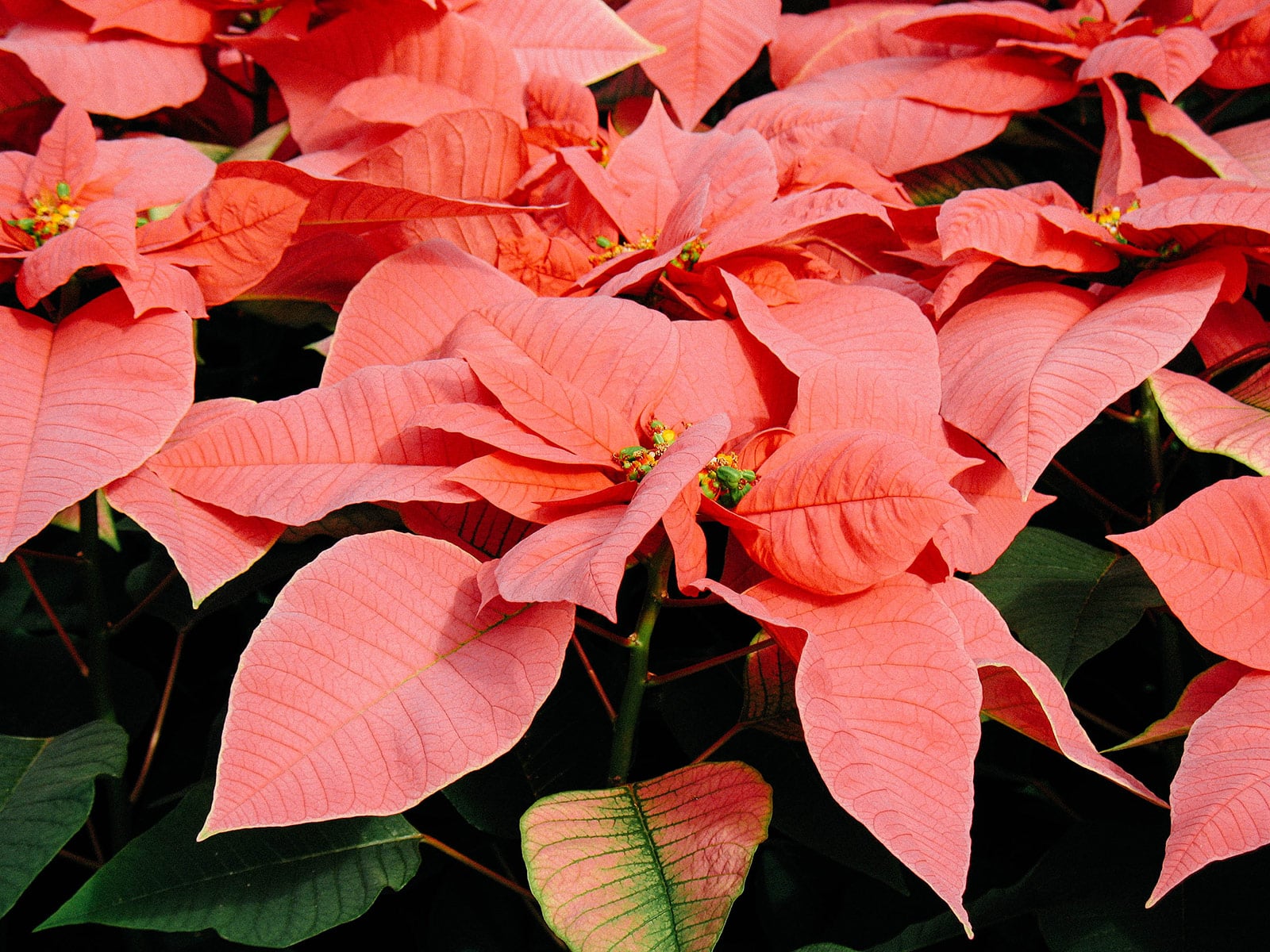
Poinsettia care during the holidays
So how do you make sure your beautiful new Poinsettia at least makes it through the holidays?
Packaging: If your Poinsettia was packaged in a plastic plant sleeve, take it off as soon as you get home so your plant is exposed to light and air. Remove the foil wrapping that may be around the pot, as it impedes drainage and can cause your new Poinsettia to drown. (Very important!)
Light: Place your plant in a bright location by a window. You can move it to the Christmas table whenever you want to display it, but the rest of the time, it likes a nice and well-lit spot.
Temperature: Keep Poinsettias away from sources of heat or cold. It won’t like to be by the heater or fireplace, nor close to drafty windows. Poinsettias like it warm (but not hot) during the day and slightly cooler (around 60°F) at night. The warmer your house, the faster your Poinsettia flowers will open up—meaning a shorter bloom time.
Watering: Keep the soil lightly moist using tepid water, never allowing the plant to stand in water for extended periods of time.
For those who want to enjoy their plant a little longer, next let’s dive into how to care for this species year-round and how to get it to rebloom the following year.
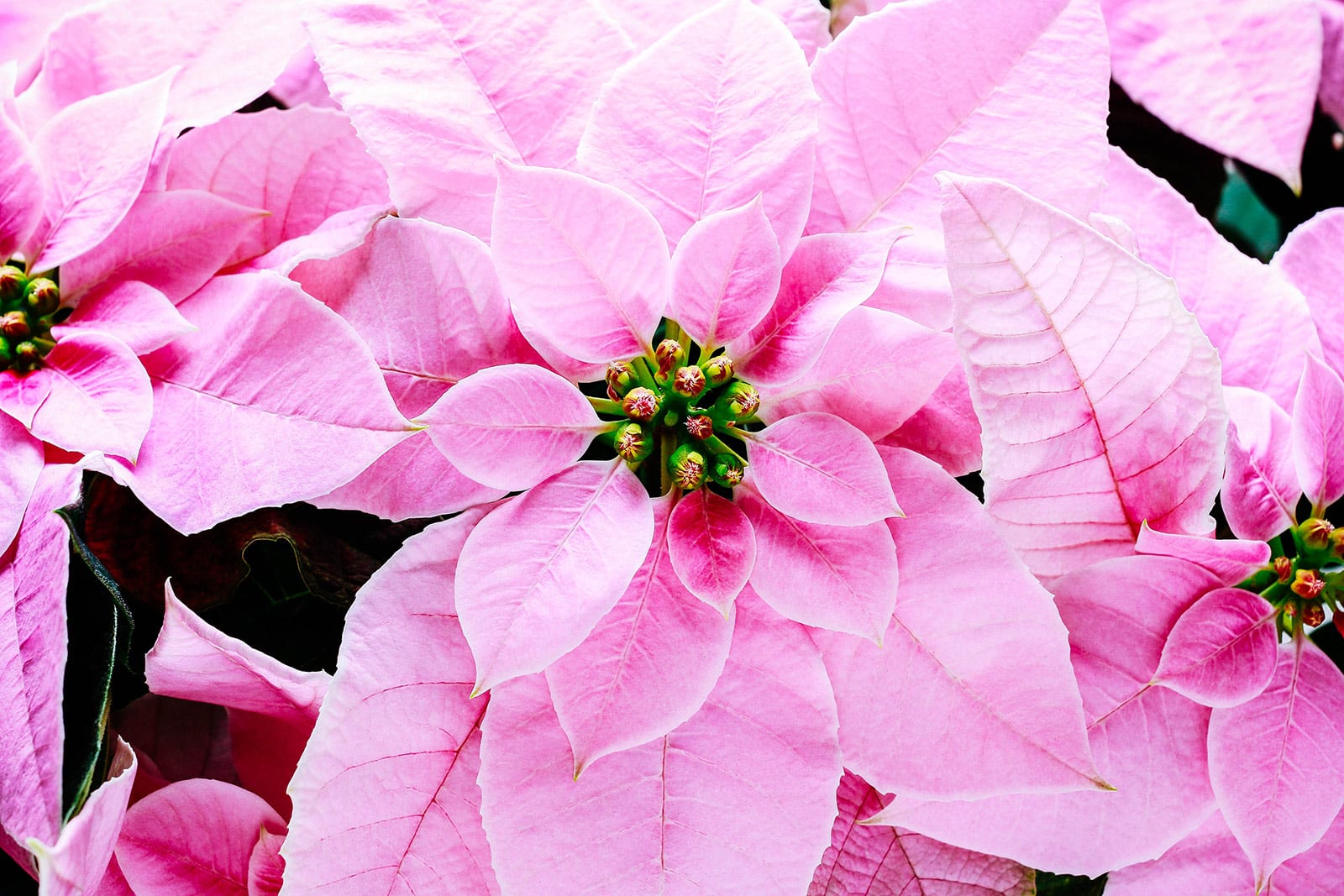
Poinsettia care after the holidays
If your Poinsettia is still going strong after the New Year, good job! Many people discard theirs at this point, as it will go dormant and drop (almost) all of its foliage. Not exactly the most decorative thing to look at, I’ll admit that.
Still, there is no reason not to try keeping your Poinsettia alive year-round. These aren’t the easiest houseplants, but I’ve seen some folks have success in reusing theirs for the holiday table year after year. Also, even if yours doesn’t make it, you can just try again next year.
Here’s how you do it:
The rest of winter
After the New Year, begin letting the soil go about halfway dry before watering again. In its natural habitat, things would be heading into dry season now. Poinsettias would go dormant, so you want to achieve something similar in the home.
Poinsettias become naturally leggy as they grow (they’re shrubs that can grow as large as trees in the wild), so I recommend cutting the plant back by at least a third in March or April, when all the colorful bracts and leaves are gone.
Springtime
Hello Poinsettia! Your plant should begin to come back to life around April or May. You can opt to repot it at this point if necessary, giving it some more space and replacing the low-quality soil they’re often sold in. A general houseplant potting mix is perfectly suitable here.
Recommended
Potting soils
After repotting, place your Poinsettia in a nice and sunny location, or even outdoors once things have warmed up to 50°F or up. Keep the soil lightly moist, watering when the first few inches have dried out.
Summertime
Your Poinsettia can stay in its sunny spot and will hopefully be growing well at this point. Consider using a diluted liquid houseplant fertilizer every two weeks or so to give it an extra boost.
Recommended
Houseplant fertilizers
You can also pinch off some of the stems if you’d like a bushier look on your plant, although doing so is not a must. This practice encourages branching in plants.
Fall: making a Poinsettia rebloom
Bring your Poinsettia back inside (if it was outside all summer) around September. Put it in a sunny window for now. You can continue to water as usual, but it’s time to start tapering off the fertilizer schedule.
If you want to see the plant bloom and color up well for the upcoming holiday season, you’ll have to start giving it some help around October.
The thing is—like many winter-blooming houseplants, including Cyclamen, amaryllis, and the aptly named Christmas (or Thanksgiving) cactus—this species knows it’s time to start producing flowers when the days begin to shorten in fall.
Related: The secret to getting Christmas cactus to bloom more than once a year
In our homes, however, we keep the lights on until late, which confuses the plant and messes with its blooming period.
To make a Poinsettia rebloom, you’ll want to provide total darkness whenever it’s dark outdoors. At dusk, you can hide it in a closet or place a paper bag over it. When you get up in the morning, put it back in its usual spot.
Quick tip
If you live in a warm climate, you may be able to keep a Poinsettia outdoors year-round and only bring it in for the holidays. This is a convenient option, because you can skip the whole “placing the plant in the closet” process. Nature takes care of that for you as the days shorten in fall—but only if it stays relatively dark in your yard. (Landscape lights or bright street lamps can interfere with blooming.)
Keep this up for about 10 weeks or until your Poinsettia has colored up nicely and produced flower buds. At this point, it’s ready to return to your tabletop full-time.
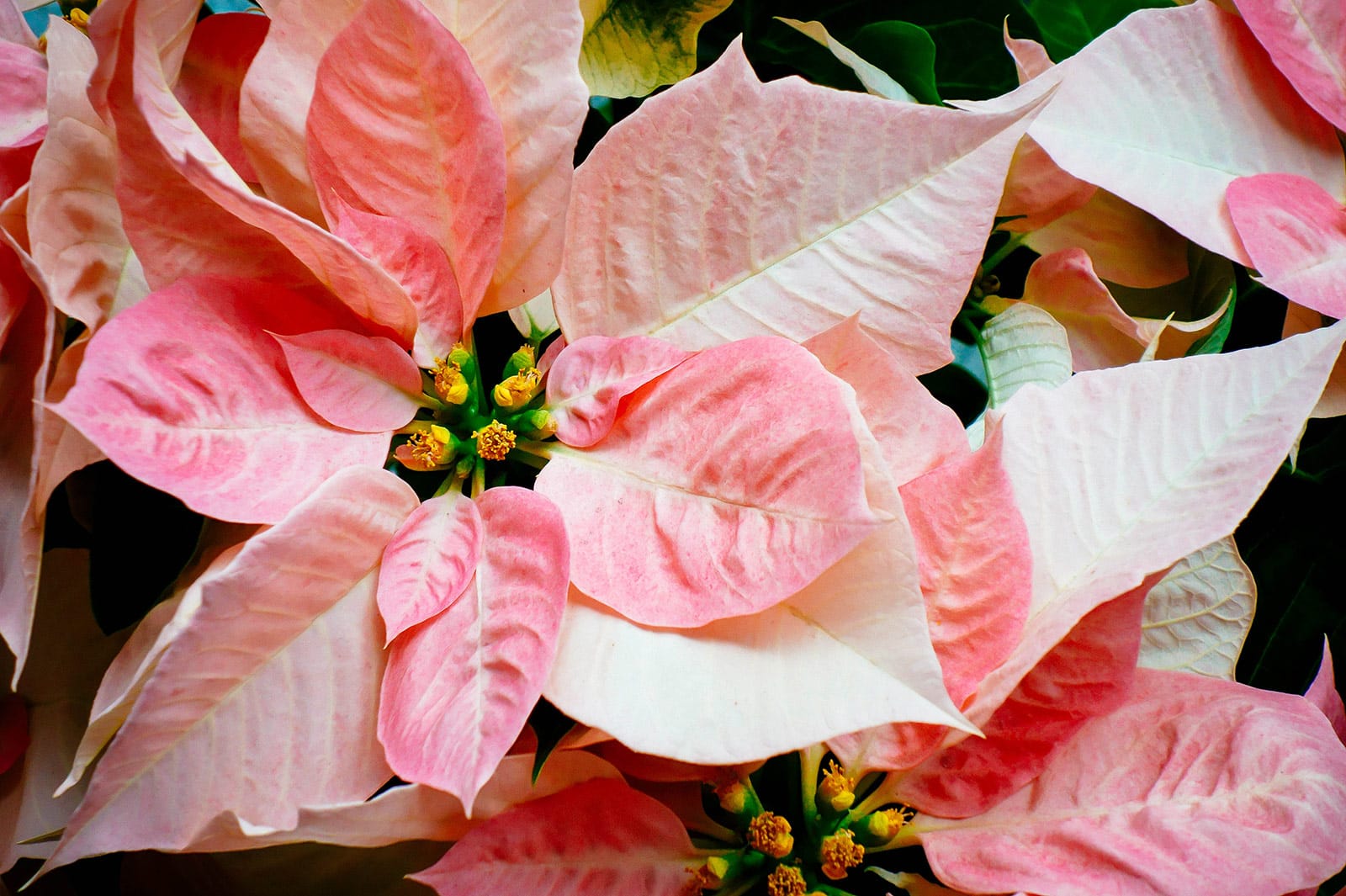
How long do Poinsettias last?
Poinsettias are tender perennials that can live year-round as a houseplant with proper care, or outdoors as a container plant in USDA hardiness zones 10 to 11 (sometimes it can overwinter in zone 9 with frost protection).
Can Poinsettias live outside in the winter?
Unless you live in zones 10 to 11, probably not. Even there, you’ll have to place yours in a sheltered spot, because they usually struggle when temperatures drop below 50°F. Poinsettias are prone to frost damage in zones 9 and below, and are best overwintered indoors.
Is a Poinsettia toxic to cats and dogs?
Poinsettias are often noted as being highly toxic and even deadly to pets. The good news? It’s a myth!
According to Poison Control, it’s true that consumption can lead to mild symptoms like irritation, diarrhea, and vomiting, but that’s the case with most common houseplants. If your furry friend takes a bite, just keep an eye on it and offer plenty of water.
More holiday plants you might like:
- How to Keep a Potted Christmas Tree Alive So You Can Plant It Afterward
- Locals’ Secret: Where to Cut Your Own Christmas Tree in Oregon’s National Forests
- 8 Proven Tips and Tricks to Make a Christmas Tree Last Longer
- 10 Clever Ideas For Repurposing an Old Christmas Tree
Sources:
- https://powo.science.kew.org/taxon/urn:lsid:ipni.org:names:30176564-2
- Evens, Z. N., & Stellpflug, S. J. (2012). Holiday plants with toxic misconceptions. Western Journal of Emergency Medicine, 13(6), 538.
- Taylor, J. M., Lopez, R. G., Currey, C. J., & Janick, J. (2011). The poinsettia: History and transformation. Chronica Horticulturae, 51(3), 23-28.
- Trejo, L., Feria Arroyo, T. P., Olsen, K. M., Eguiarte, L. E., Arroyo, B., Gruhn, J. A., & Olson, M. E. (2012). Poinsettia’s wild ancestor in the Mexican dry tropics: historical, genetic, and environmental evidence. American Journal of Botany, 99(7), 1146-1157.


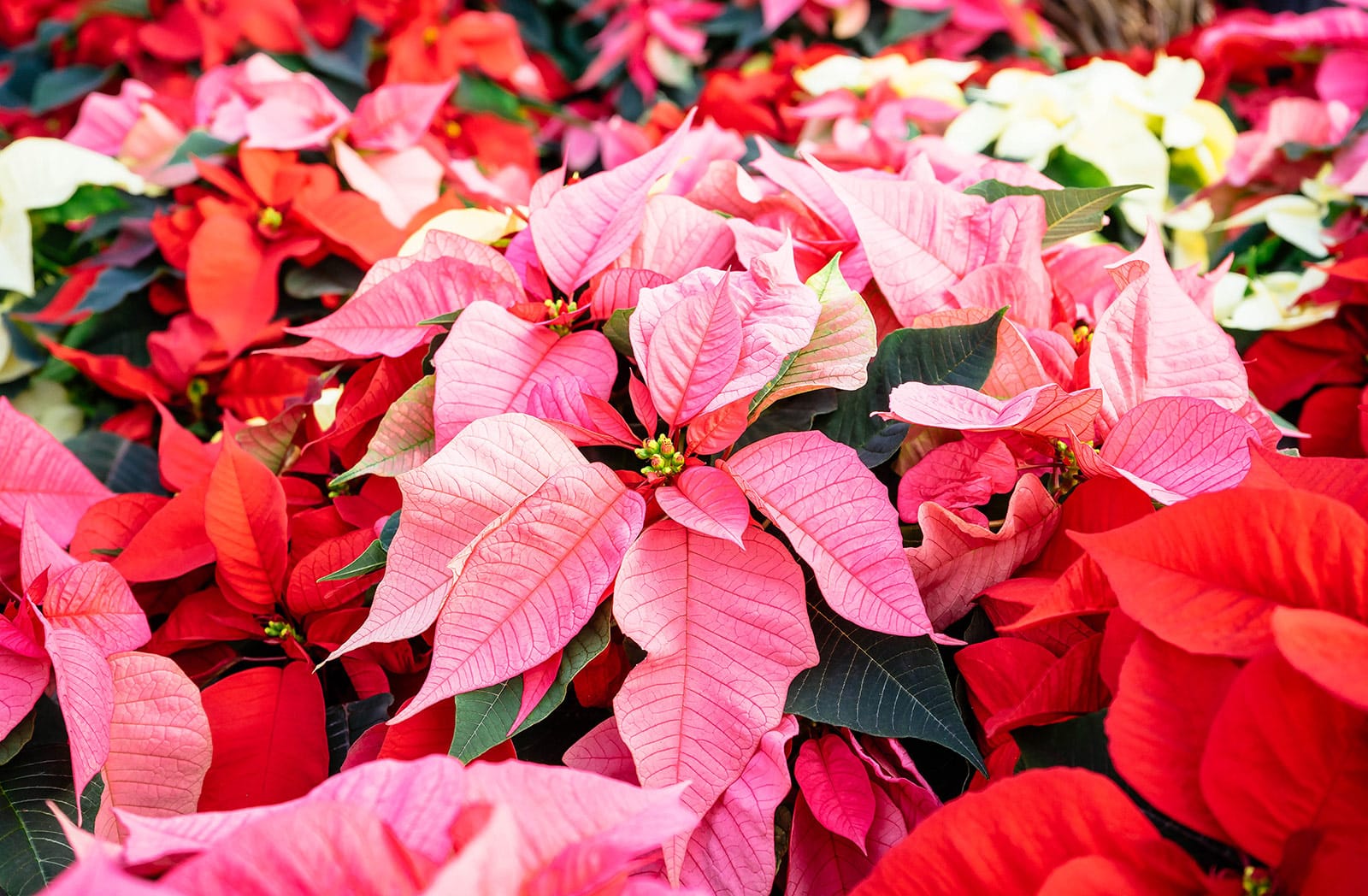













I rescued a poinsettia 2 years from a neighbor’s yard waste pile. She lives outside in her original pot with minimal care, spending winter in the warmest part of my patio in zone 9. She looks to be blooming this year. 🙂
Their colourful bracts are always attractive and the most lovely holiday plants inside the house. Yes, you can easily grow white poinsettias inside your home. How to take care of the white poinsettias? You can plant them in a small potting mix and give them the right sunlight.
One needs to follow simple steps like collecting the roots of the winter poinsettias from a garden/ ne seedlings. Then gradually give it fertilizer, water, and sun. You can finally see the bloom of your potting winter poinsettias.
How to take care of winter rose poinsettia? You must check the roots even if your plant bloom is okay. Few brown roots determine that your winter poinsettias are pretty good but the brow/ decaying roots should not be more than 50%.
So, from the garden to your indoor corner, winter poinsettias are ready to bloom. These poinsettias bloom is a gift to you if you care for the plants.
What are the diseases of winter poinsettia?
When you think of how to take care of the winter rose poinsettias, you must count on their potential diseases. The most common diseases of winter poinsettias are the following according to The Pennsylvania State University Extension:
Falling leaves: It happens due to improper setup. For example-less light, low water, and root rotting. If you have this problem in the garden bed then maintain a space between your winter poinsettias plants in a moist soil bed.
Scab: These are yellow colour spots in the vein of the green leaves. It happens due to the Sphaceloma poinsettia fungus. So, avoid overhead watering, and support the plant with less humidity.
Powdery Mildew: It’s a common problem for all plants. The leaves turn yellow and the roots get the whiter snow-like disease. Oidium fungus is responsible for powdery mildew. So, apply fungicides to protect your winter poinsettias from powdery mildew. Also, check the cuttings to avoid the most disease when you replant.
Flower blight: Usually the brown spots on the flowers, stem and leaves. Botrytis cinerea is the causing pathogen for brown blights. Well, space between the plants, and air movement can save your winter poinsettias from brown blights.
So, these are the thriving diseases you can face on the way to how to take care of the winter poinsettias. But if you abide by the rules to grow it then the chances of the diseases are quite less.